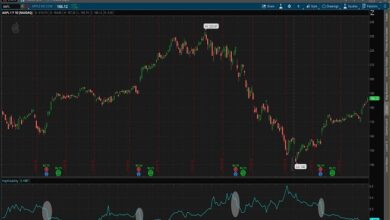Nifty 100 vs Nifty Smallcap 100: Bluechips or Smallcaps – Where to Invest in 2025?

Giants of Stability: The Powerhouse That Is Nifty 100
The Nifty 100 is a very diverse index, based on market, capitalization in that it includes the top 100 companies in the National Stock Exchange. These bluechip companies that command 76 percent of the float-adjust market capitalization, are distributed in key areas of such industries as financial services, IT, FMCG, and automobiles. Investors with higher safety and consistent returns prefer the Nifty 100 due to the more consistency and stability in its sector weighting and low volatility that is often considered as being indicative of the economic success of India.
Smallcaps Unleashed: Exploring the Growth Engine of Nifty Smallcap 100
Emerging small-cap businesses with the potential to become future leaders are watched by the Nifty Smallcap 100 index. The index usually has higher volatility, especially during decline stages, and balances industry variety, with financial services, capital goods, IT, and healthcare as the major categories. Because of its good profitability and excellent liquidity, the Nifty Smallcap 100 beat numerous large-cap indices in 2024, yielding 24%. However, in 2025, it has faced more severe drops and rising market volatility.
The Tale of Two Performances: Stability vs. Surge in 2025
Compared to the fairly slight correction of 1.5-7% for the Nifty 100, the Nifty Smallcap 100 has faced considerable volatility, falling 11-21% thus far in 2025. Bluechip shares continue closer to historical levels, while smallcap businesses trade at higher prices with P/E ratios above long-term norms. The performance turnaround after the rise last year shows how small-cap investment is cyclical and how the Nifty 100 offers greater security.
Risk and Reward Dance: Tailoring Your Portfolio to Your Profile
The investment in Nifty 100 offers diversified exposure in the established firms, meaning it is suitable to the conservative or long-term investors who would prefer to keep their capital intact. Instead, the Nifty Smallcap 100 is designed to be used by investors willing to take greater risk to receive quicker returns; they often perform better in a bull market, but are more prone to a crash or macroeconomic fluctuations.
Timing Your Leap: Navigating Market Currents with Confidence
The choice will be determined by investor objectives and riskiness to select the Nifty 100 or Nifty Smallcap 100. On the one hand, the Nifty Smallcap 100 could be considered by ambitious long-term investors with volatility capacity and Nifty 100 by risk-averse investors, selecting it due to its portfolio safety, low drawdowns. Disciplined asset selection and periodic portfolio reviews are important regardless of the index choice.
Charting Growth and Stability: A Closer Look at Market Momentum
The Nifty Smallcap 100 index gives risk-tolerant investors the chance of high profits, while the Nifty 100 index shows the relative steadiness and consistent growth that conservative investors desire. 2025 market trends show that smallcap firms continue to gain interest despite recent losses because of their ability to act as accelerators for economic development. The Nifty Smallcap 100 might be a tempting complement to the Nifty 100’s bluechip power for investors who wish to vary and have a stomach for volatility. Growth possibilities and portfolio stability may be matched with frequent tracking and judicious selection among various indices.
Final Verdict: Striking a Balance Between Safety and Opportunity
As the Nifty Smallcap 100 also offers investors the chance to embrace instability in the name of gaining potentially disproportional rewards, the Nifty 100 would provide a blanket of stability in the event of change in the markets in 2025. Both indices have distinct advantages—analyzing sector exposure, value, and market trends will assist investors match their strategy effectively for growing market cycles.




